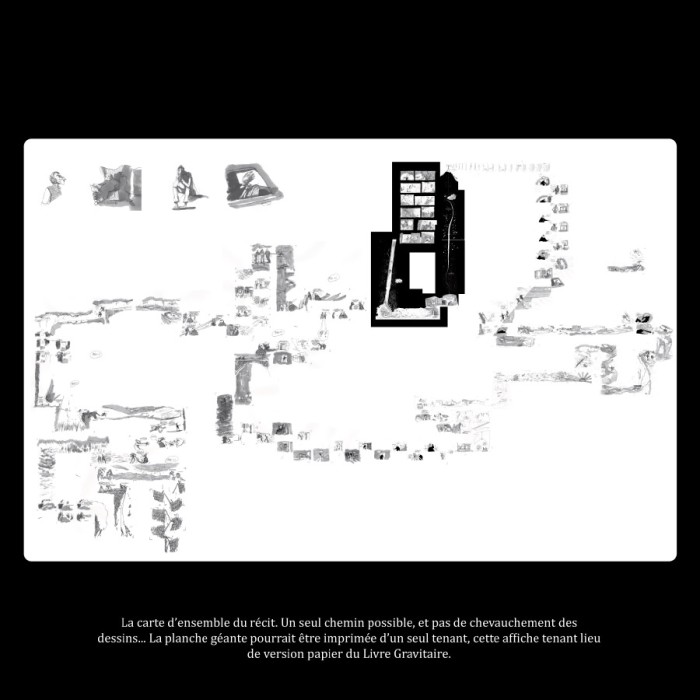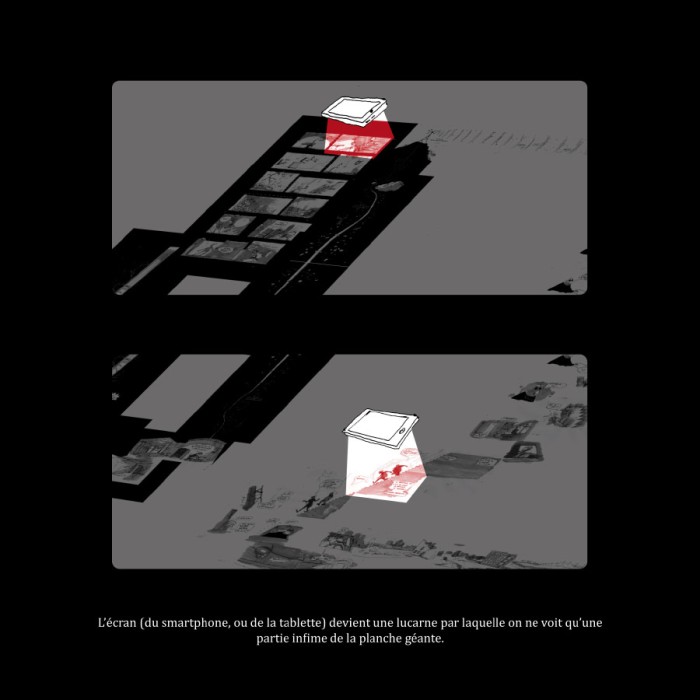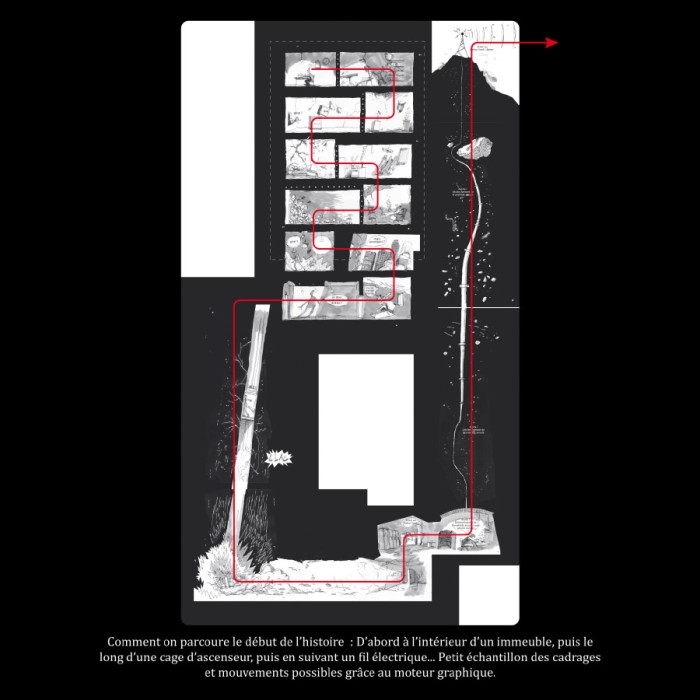Contributing € 5
Un grand merci à vous!
Mention du soutien dans une page "remerciement" ajouté à l'application
> 06 Co-financiers
Goteo ha construido una historia única en el mundo del micromecenazgo. ¿Quieres seguir formando parte de ella?
We use own and third party cookies to improve your user experience and our services, analyzing users' browsing in our website. If you continue browsing, we will consider that you consent to its use. You can get further information in our Cookies Policy
Le livre gravitaire
 Min.
Min.
 Opt.
Opt.
Mention du soutien dans une page "remerciement" ajouté à l'application
Invitation à une soirée de lancement du livre gravitaire
Recevoir un "produit dérivé" du livre gravitaire (affiche, carte postale...)
Disposer en avant-première du code original du moteur graphique, pour le tester, faire un retour au développeur, proposer des améliorations...
Rencontre avec les auteurs autour d'un verre (sur Nantes et environs)
Cours particulier de dessin ou de code créatif, selon votre convenance.
Un dessin original qui a servi au projet (sachant que ces dessins ne seront pas exactement identiques à la version de "diffusion", car ils passent en partie par la retouche numérique - formats A4 en général).
Explorer les contraintes et libertés d'écriture qui apparaissent lorsque l'on propose une nouvelle interface de lecture : Qu'est-ce qui est hérité du livre « traditionnel », qu'est-ce qui est radicalement nouveau ? Quels schémas narratifs issus d'autres médias sont rendus possibles grâce à ces nouvelles interfaces?
The Gravitational Book Project’s purpose is to investigate the narrative opportunities offered by a new graphics engine in order to hack this new media called the e-book
 Task
Task
|
Minimum | Optimum |
|---|---|---|
|
Développement des outils de navigation
Développement des outils suivants: boussole, niveau à bulle, pilote automatique, autocarte…
|
€ 625 | |
|
Dessin des vignettes
Réalisation de toutes les images du livre.
|
€ 2.000 | |
|
Mise en page, compositing
Organiser les dessins sur la planche géante, qui défilera dans la fenêtre de l'écran. Un peu de retouche d'image, le cas échéant.
|
€ 1.000 | |
|
Développement du moteur graphique annexe
Le prologue du livre gravitaire est lu "classiquement", en feuilletant avec l'index. Donc cela nécessite un second moteur graphique (beaucoup plus simple que le premier, le "gravitaire").
|
€ 625 | |
|
Développement compatibilité
Amélioration de la compatibilité avec différentes version android
|
€ 625 | |
|
Portage sur plateforme OSX
Portage sur plateforme OSX (apple).
|
€ 1.000 | |
|
Ecriture, illustrations
Recherches complémentaires en écriture et dessin
|
€ 1.000 | |
|
Lettrages sur ordi
Réalisation des lettrages
|
€ 1.000 | |
| Total | € 3.625 | € 7.875 |
The idea is to create a digital comic novel that would be readable only with the help of this graphics engine rather than a simple translation of a comic book on a digital screen.
The principle is quite simple: The reader is facing a wide comic plate/page, of which he/she can only visualise a tiny fraction through the “window” of the smartphone or the tablet’s screen.
As he/she tilts the device, the gravitational force brings down the “plate”, which scrolls in the visualisation framework.
The reader flows through the wide plate. The whole project stake lies in the interplay between the twists and turns of the story and the movement of the scrolling, between a drama and its transcription into a complex pictorial structure, to be explored.
Speaking of movies, from a writing point of view, the composition of a frame is never neutral: i.e. a tracking shot and a still frame have different meanings, as for a cut-up editing and a sequence shot, etc.
Likewise, the Gravitational Book Project bets on the graphic expressiveness of its configuration: What will happen when a 1 meter long panel scrolls before the eyes of the reader? When the panels are arranged to fake a “shot / reverse shot” dialogue? What will happen if the page flips over throughout the exploration?
Two basic principles have been selected for the configuration of the Gravitational Book:
1 • One single page/panel
No cuts or any cross-fading between the “shots”: in reality, this is a very wide page (which could be printed on paper), not a movie or an animated fresco.
2 • There is only one possible way
This is a book, not a video game. The reader is responsible and has free will in the way he/she browses through the story (as he/she would do with a real book) but he/she is not to make any decision as for the process of the same.
Screenshots of a scanned comic are related to a graphics engine, responsive to the tilt of the reading device (tablet or smartphone). The coordinates of each screenshot are marked, as well as the path to follow that runs through each screenshot at a time.



Our motivation lies in our long time and common interest in comic books and digital media, and in the absence of satisfactory proposals combining these two cultures. That is why we have studied on a tool which, simultaneously to enable reading on a digital device, calls in question the narrative patterns inherited from comics in their original paper form (screenshot, strip, panel).
This search has materialized in some way with the Gravitational Book, and currently continues in other forms, particularly within the framework of the project Nouvelle Page organized by the Maison de la recherche et de l'imagination and developed in the fablab in Caen.
Once the ergonomics and navigation tools developed, others will be able to seize this narrative tool:
To sum up, the Gravitational could therefore be used as a laboratory to
Ultimately, we hope that the main beneficiaries of the project will be the readers!
Why do we use the Goteo platform?
Because it was obvious to develop this project in the free culture dynamics promoted by Goteo. In fact the graphics engine is developed under the GPL license: The code will be available to be repeated or improved by others. Similarly, this existing code could also be used as is, by authors who would like to confront it to their own universe.
The perspective fostered by free licenses actually helps the broadcasting of diffusion this type project, altogether rather uncategorizable.
Raphaël Lerays: Formed as an architect and a scenographer, the question of transmedia seems implicit in most of the projects he elaborates. All these proposals have one thing in common: they tell stories, built upon various materials (space, video production, illustrated texts, comics, etc.).
Alexis Chabanol: Translator, he is the co-author, with Raphael Lerays, of the project Strip Trips: a digital correspondence, drawings versus texts (from 2010 to 2012, 216 issues). The Gravitational Book is a different format (one single story), and this literary configuration is unique.
Laurent Malys: Laurent Malys produces software and applications in various areas. His works explore how we interact with the machine, and questions the limits and abilities of human-machine interface systems. He promptly seized the project's graphic engine on which the Gravitational Book is built, and his knowledge have influenced some choices regarding the ergonomics of the prototype, and some features which could be added.

Un grand merci à vous!
Mention du soutien dans une page "remerciement" ajouté à l'application
> 06 Co-financiers
Invitation au vernissage
Invitation à une soirée de lancement du livre gravitaire
> 31 Co-financiers
Produit dérivé
Recevoir un "produit dérivé" du livre gravitaire (affiche, carte postale...)
> 17 Co-financiers
DIVERS : BETA-TESTING
Disposer en avant-première du code original du moteur graphique, pour le tester, faire un retour au développeur, proposer des améliorations...
> 11 Co-financiers
Rencontre avec les auteurs
Rencontre avec les auteurs autour d'un verre (sur Nantes et environs)
> 15 Co-financiers
Transfert de savoirs
Cours particulier de dessin ou de code créatif, selon votre convenance.
> 03 Co-financiers
Oeuvre originale
Un dessin original qui a servi au projet (sachant que ces dessins ne seront pas exactement identiques à la version de "diffusion", car ils passent en partie par la retouche numérique - formats A4 en général).
> 08 Co-financiers
Workshop : Nouvelles écritures, nouveaux lecteurs à l'ère du livre numérique.
Explorer les contraintes et libertés d'écriture qui apparaissent lorsque l'on propose une nouvelle interface de lecture : Qu'est-ce qui est hérité du livre « traditionnel », qu'est-ce qui est radicalement nouveau ? Quels schémas narratifs issus d'autres médias sont rendus possibles grâce à ces nouvelles interfaces?
> 00 Co-financiers
Traduction des pages du site goteo, qui présente le projet. Traduction du livret de présentation du projet (une douzaine de pages, donc travail as